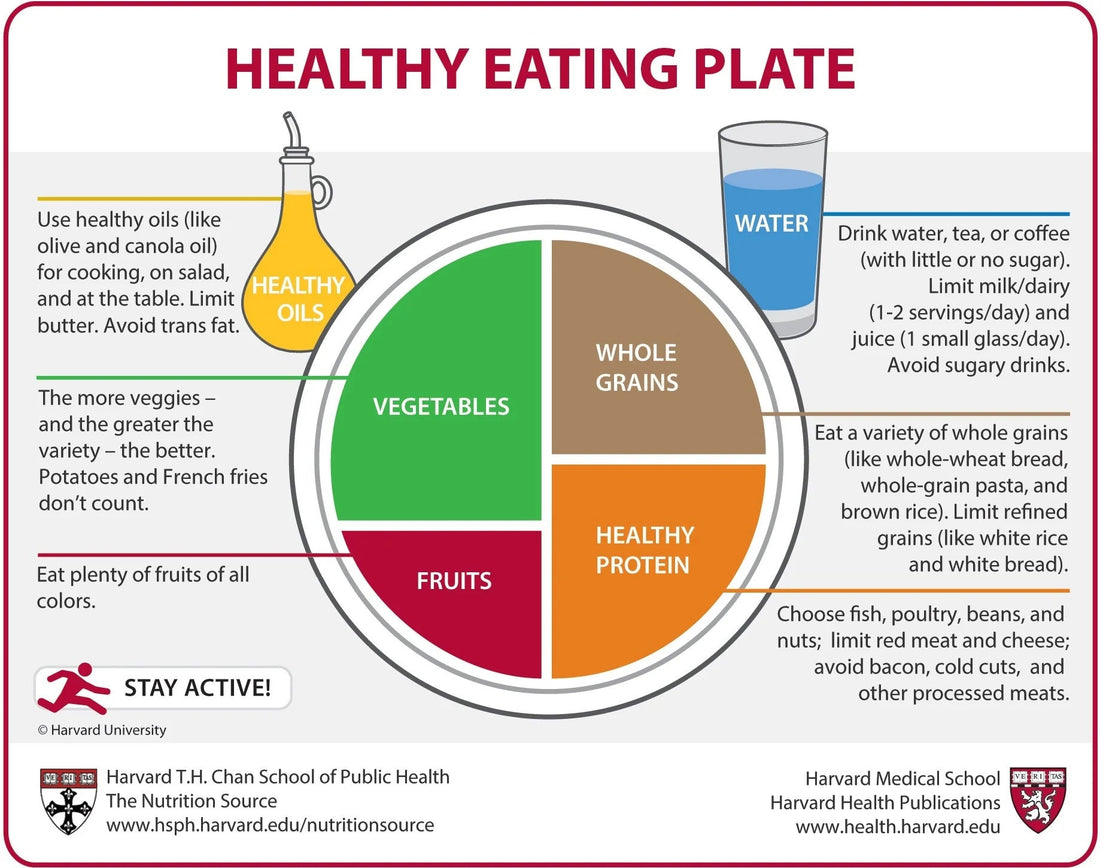
Building a plan for healthy eating

By now you know generally what types of food a healthy diet includes. But it can take time to reframe your mental image of a healthy meal. Over the years, many of us have become used to thinking of the hunk of meat in the center of our plates as "dinner." The salad or vegetables on the side were fine add-ons, but not the star attraction. Changing your dinner plate starts with changing your idea of what a plateful of healthy food should look like.
A healthy plate
To eat healthy foods at home, it might be easier to think about what should be on your plate. Here's some guidance on what makes a healthy plate:
- Fully half your plate should contain fruits and vegetables. Aim for a variety of colors and types. (Note that for these purposes, potatoes— including French fries—don't count as vegetables.)
- A quarter of the plate should be filled with whole grains—not just any grain. Whole and intact grains, such as barley, quinoa, oats, and brown rice, are good choices.
- The final quarter of your plate should consist of healthful sources of protein, like fish, beans, nuts, seeds, poultry, eggs and a limited amount of meat. Processed foods shouldn't appear here.
- You should use healthy oils like olive and coconut in cooking, on salads, and at the table.
- Drink water with your meals to get use to a routine of drinking water during the day.
Plan ahead for healthy eating
If you come home from work to an empty refrigerator, you're not likely to cook a healthful meal. It takes a bit of organization and planning to stay on top of healthy eating, Try these healthy eating planning tips:
- Plan your meals for the week, even if it's just a rough outline. Rely on a mixture of easy go-to dishes you can prepare without a recipe, alternating with one or maybe two new recipes a week on less busy days to make things more exciting.
- Jot down a shopping list, making sure to include the fresh items you'll need, as well as pantry staples you may be low on.
- Plan your weekly shopping trips for times when you are least stressed and not hungry, so you can make wise food decisions.
- Make sure you always have on hand enough staple ingredients—such as frozen vegetables, canned beans, whole grains, eggs, and whole-grain pasta— to create a healthful meal any day of the week.
- When purchasing perishable foods, buy only those you need for the week. This way, you won't waste food or money or feel obliged to overeat.
- Read food labels, avoiding products with excess sodium, added sugars, and saturated fat.
- Prep your meals the night before as needed—put frozen fish in the refrigerator to thaw, soak beans and cook them, and even chop vegetables for your menu the next day.
- Prepare foods with healthful cooking techniques: saut' (in moderate amounts of healthful vegetable oils), roast, bake, poach, or simmer instead of deep fat frying.
- Consider keeping a food journal, which may help you be more accountable for and successful with your health goals, according to several studies.
content source:
